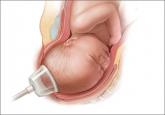Commentary

The latest guidance from ACOG on hypertension in pregnancy
Dr. Jaimey Pauli narrows down the recent recommendations from ACOG on hypertensive disorders in pregnancy
EXPERT COMMENTARY
George Macones, MD
Professor and Chair, Department of Obstetrics and Gynecology, Washington University in St. Louis School of Medicine, St. Louis, Missouri.
The author reports no financial relationships relevant to this article.

No. Among 987 women with nonproteinuric preexisting or gestational hypertension who were randomly assigned to tight control (target diastolic blood pressure [BP], 85 mm Hg) versus less-tight control (target diastolic BP, 100 mm Hg), the primary outcome rates were similar: 31.4% versus 30.7% of women, respectively, experienced pregnancy loss or needed high-level neonatal care for more than 48 hours during the first 28 post-natal days.
Severe hypertension (≥160/110 mm Hg) developed in 27.5% of women in the tight-control group and 40.6% of women in the less-tight control group (P<.001).
Magee LA, von Dadelszen P, Rey E, et al. Less-tight versus tight control of hypertension in pregnancy. N Engl J Med. 2015;372(5):407–417.
The question of degree of control of hypertension during pregnancy has been debated for many years. The primary concern, which is mainly theoretical, is that tight control of hypertension may lead to underperfusion of the uterus, ultimately resulting in fetal growth restriction. This study adds to the available body of literature on this subject.
Details of the trial
In this pragmatic randomized clinical trial, 987 women with office diastolic BP of 90 to 105 mm Hg (or 85 to 105 mm Hg if they were taking a hypertensive medication) between 14 weeks, zero days of gestation and 33 weeks, 6 days of gestation were randomized to tight (n = 488) versus less-tight control of hypertension (n = 493).
Practitioners were encouraged to use labetalol for treatment. The primary outcome was pregnancy loss (miscarriage, ectopic pregnancy, pregnancy termination, stillbirth, or neonatal death) or the need for high-level neonatal care (defined as greater than normal newborn care for more than 48 hours until 28 days of life or discharge home). Secondary outcomes included serious maternal morbidity as late as 6 weeks postpartum. Statistical analysis was based on the intent-to-treat principle.
Adherence to assigned treatment was good, at approximately 75% in each arm. As stated above, the study found no differences in the combined primary endpoint between the two groups. It also found no differences in other perinatal outcomes, including small size for gestational age or other adverse neonatal outcomes. Maternal complications generally were similar as well, with the exception of severe hypertension, which was more common in the less-tight control group.
Strengths and weaknesses of the study
This trial has several important strengths, including its pragmatic design, making it more applicable to everyday practice. Other strengths include rigorous methods and a large sample size.
Two main weaknesses hamper the study, however:
What this evidence means for practice
This study does not establish a foundation for a change in clinical practice. At best, it supports the maternal safety of less-tight control of hypertension in pregnancy. That aspect of the trial may find its way into counseling of the patient.
–George Macones, MD
Share your thoughts on this article! Send your Letter to the Editor to rbarbieri@frontlinemedcom.com. Please include your name and the city and state in which you practice.

Dr. Jaimey Pauli narrows down the recent recommendations from ACOG on hypertensive disorders in pregnancy

A peer-to-peer audiocast with John T. Repke, MD, and Errol R. Norwitz, MD, PhD

New data confirm that the combination of forceps and vacuum extraction should be avoided and demonstrate that use of midcavity rotational forceps...

Guidelines from ACOG and the USPSTF support use of low-dose aspirin to minimize complications of preeclampsia in pregnancy, but more studies are...
